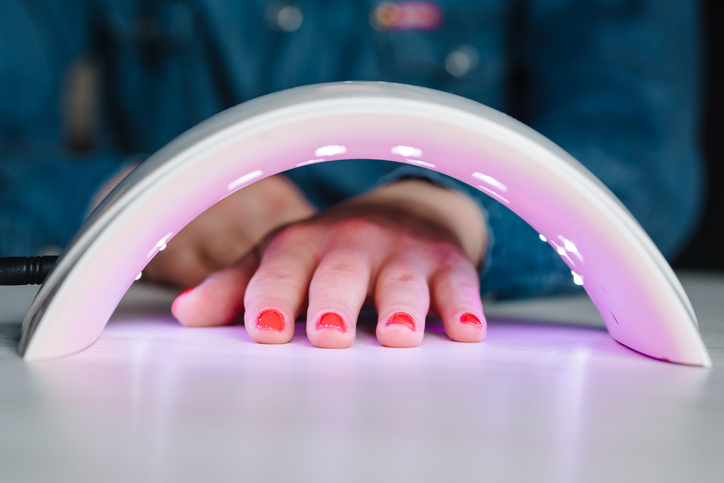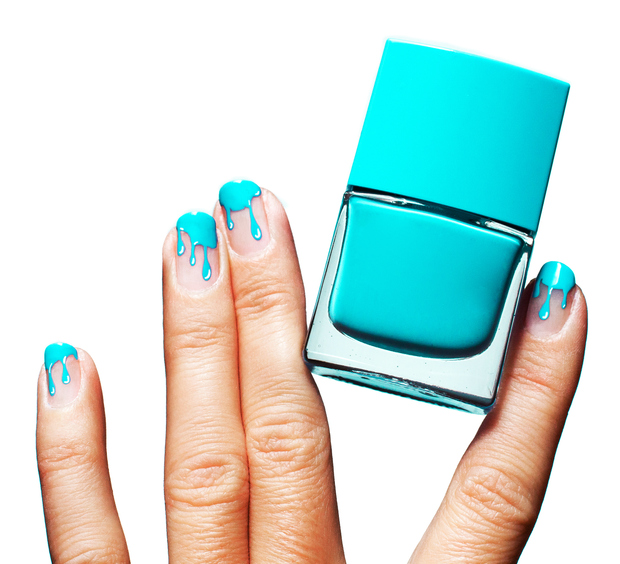It May Be Time to Wave Goodbye to Gel Manicures

By Joy Stephenson-Laws, JD, Founder
Many people don’t think about how much the hands are exposed to harmful UV rays through the windshield and car windows. Hands are also one of the first parts of the body to really show age, because the skin on the hands is thin and delicate. So aside from the fear of skin cancer, maintaining youthful looking hands is something we should not ignore.
What I didn’t really think about, however, until coming across a recent article from National Public Radio (NPR) was how my monthly manicures could be detrimental to the health of the skin on my hands. Like many nail salon goers, I get gel manicures. This type of manicure utilizes a UV lamp to dry my nails. These manicures are long-lasting and essentially have zero drying time, so they are really convenient!
The NPR article discusses a recent study published in Nature Communications and conducted by researchers from the University of California San Diego and the University of Pittsburgh. The research team involved both human and mice cells “...using distinct acute and chronic exposure protocols to evaluate the DNA damage and mutagenic effects of ultraviolet radiation emitted by a nail polish UV-dryer,” according to the study report published by Nature Communications.
Although more research is needed and they cannot definitively say that exposure to these UV nail polish dryers causes skin cancer, they did find evidence which suggested that chronic use of these dryers can cause DNA damage and mutations.

“Notably, in most cases, both nails and hands are irradiated up to 10 minutes with a UV-nail dryer per session. The number of nail salon clients is estimated to reach 8 clients a day per nail technician, accounting for approximately 3 million daily clients in the United States. Typically, regular users change their gel manicures every 2 weeks,” according to the study report.
I do not get gel manicures every two weeks, but I am also not one to partake in things that are potentially harmful to my health (even if the risk is low). And with the case of gel manicures, the risk may not be low.
“Maria Zhivagui, a postdoctoral researcher at UC San Diego and the first author of the study, told NPR in a phone interview that she was alarmed by the strength of the results — especially because she was in the habit of getting gel manicures every two to three weeks,” reports NPR.
Furthermore, some nail enthusiasts, including Dr. Zhivagui, have also used a UV dryer at home. Dr. Zhivagui said she is now done with this.
It’s really a personal choice and you can weigh the risks and make a decision right for you, but I think it’s important to look at the overall picture. Perhaps if you are someone who is not vigilant about sunscreen and you get gel manicures quite often, you may be putting yourself at a significant risk for developing skin cancer.
According to the American Academy of Dermatology (AAD), skin cancer is the most common cancer in the United States. It is estimated that one in five Americans will develop skin cancer in their lifetime.
“People with darker skin tones are prone to skin cancer in areas that aren’t commonly exposed to the sun, like the palms of the hands, the soles of the feet, the groin and the inside of the mouth. They also may develop melanoma under their nails,” according to the AAD.
There are some precautions you may be able to take.
Wearing sunscreen (make sure the nail technician does not wash it off) and fingerless gloves may mitigate some of the effects. According to NPR, the FDA also recommends removing fragrances, cosmetics and skincare products that can cause increased sensitivity to the UV light.
Of course, you can also just go with a good old fashioned regular manicure. Sure, it may chip faster and you have to wait longer for it to dry, but nothing is more important than the health of your skin and overall health and wellness.You can also try a dip powder manicure.
There are also very sophisticated and nice looking press-on nails and nail strips. The options out there are practically endless.

“Eating certain foods may help protect against skin cancer. It is hard to test the role of food in preventing skin cancer, but several studies have looked at antioxidants (including vitamin C, vitamin E, beta-carotene, zinc, and vitamin A), folic acid, fats, and proteins, and a variety of whole foods,” reports Mount Sinai.
“While results are not clear, antioxidants may offer some protection from skin cancer. Foods such as fish, beans, carrots, chard, pumpkin, cabbage, broccoli, and vegetables containing beta-carotene and vitamin C may also help protect skin. Studies on animals suggest that substances found in foods, such as soy and flaxseed, may help fight cancer in general, and may help prevent the spread of melanoma from one part of the body to another.”
Remember, a big part of being proactive about our health is always being curious about the potential effects of certain things we do in our life. For example, check out this pH Labs blog about hair dyes and breast cancer. Always remain curious whether it’s looking at food labels or looking at what is in your beauty products.
Enjoy your healthy life!
Disclaimer: This article is not intended to provide medical advice. Please consult with your doctor or another competent healthcare practitioner to get specific medical advice for your situation.
The pH professional health care team includes recognized experts from a variety of health care and related disciplines, including physicians, attorneys, nutritionists, nurses and certified fitness instructors. This team also includes the members of the pH Medical Advisory Board, which constantly monitors all pH programs, products and services. To learn more about the pH Medical Advisory Board, click here.







